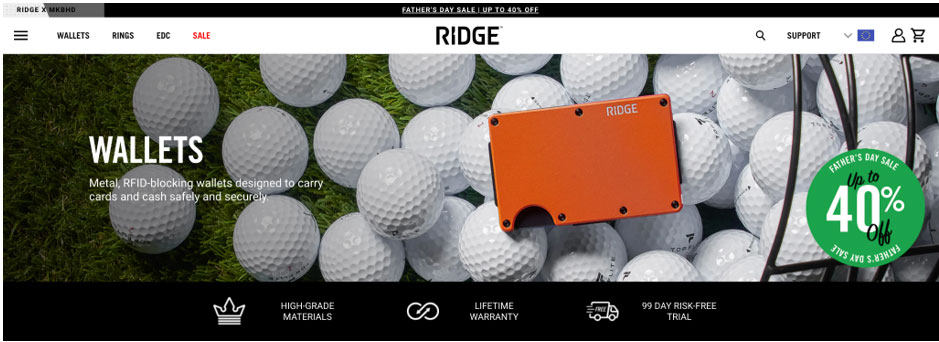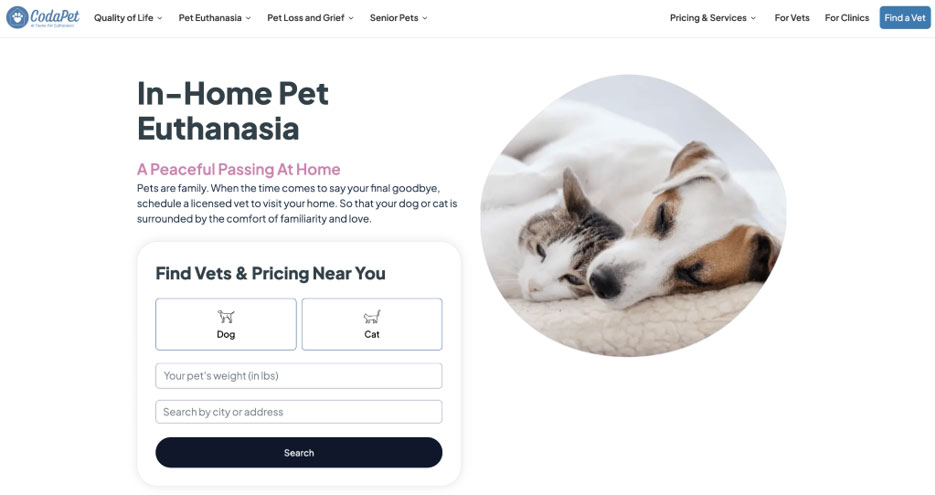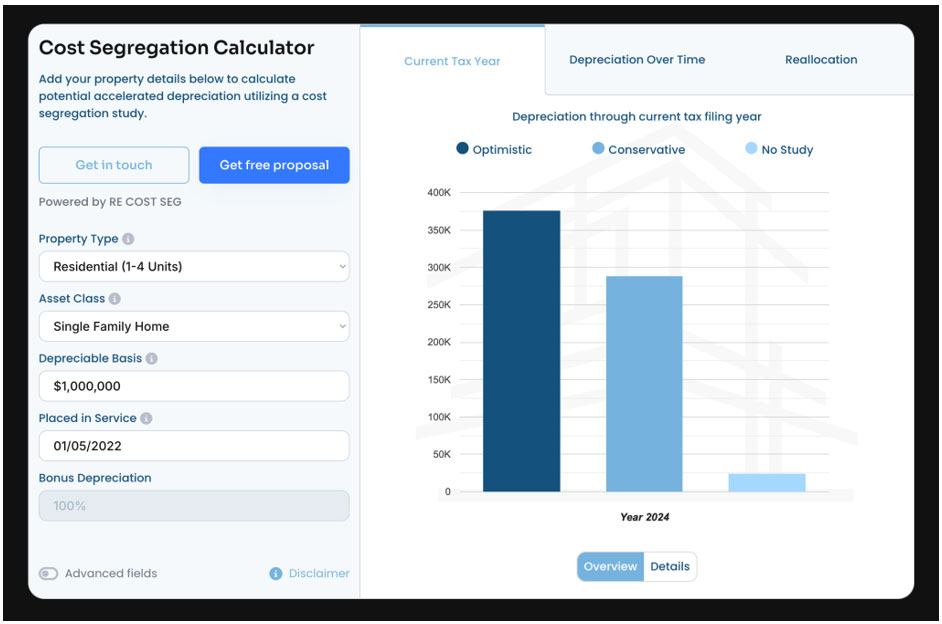Guest post by Natasha Lane.
According to the RAIN Group, 43% of sales leaders say the digital sales cycle has lengthened over the past 12 months. And there are many reasons why this might be the case.
Consumers aren’t just cutting back spending in several discretionary categories. They’re also doing increasingly more pre-purchase research, resulting in a subtle but noticeable delay in purchase decisions.
The outcome? A more complex path toward getting first-time web visitors into your sales funnel (and nudging them toward a conversion).
Fortunately, there are ways to combat these purchasing behaviors — regardless of whether you’re targeting B2B or B2C buyers. All you have to do is employ the right design tactics to encourage prospects to begin their buyer’s journeys.
This guide will cover several clever strategies to lead new visitors straight into your sales funnel. Moreover, it will provide examples of brands doing it right to inspire you to apply these tactics to your site. Let’s get into it.
Design a Clear and Convincing First-Time Visitor Experience
First interactions directly impact brand perception and purchase intent. So, to get more prospects into your sales funnel, consider the impression your site will leave on first-time visitors.
Great design, stunning visuals, and optimized performance can go a long way in wowing your target audience. Nevertheless, it’s also important to consider clarity and relevance — especially when attracting buyers into your sales funnel.
Data suggests that relevance is the name of the game in 2025. According to new studies, 81% of consumers will ignore seemingly irrelevant branded messages. And 96% are more likely to purchase from brands that employ personalization.
In other words, you need to use your website in a way that caters to first-time visitors. Be crystal clear about what your solutions do, how they work, and why they should matter to your target audience.
For example, check out how Ridge does it on its Wallets landing page. Here, the business uses the hero section of the page to communicate that its products are made out of metal, block RFID, carry cards and cash, and are secure.
That value proposition is enough to help web visitors decide whether those benefits are relevant to their needs, maximizing their chances of staying on the website and entering the sales funnel with the intention to buy.
Reducing Risk with Trust Signals and Transparency
Brand trust is a huge conversion factor. In fact, research shows that 88% of buyers need to trust a brand to buy from it. This shows just how essential this aspect of branding is if you want to encourage conversions.
The good news is that earning your audience’s trust — regardless of whether they’re long-time followers or first-time web visitors — isn’t impossible. You just have to utilize the right tactics to demonstrate your organization’s credibility and competence.
Showcasing social proof, for instance, is one of the most effective methods of establishing trustworthiness and boosting web visitors’ purchase intent. However, you could also take things a step further.
For example, research suggests that transparency hugely benefits brand trust. According to survey data, 60% of online buyers seek transparency and trust when deciding what brands to buy.
With this in mind, one of the easier ways to lead new web visitors into your sales funnel is to make it easy for them to find and evaluate relevant information about your solutions. Including how they work, what they include, and how much they cost.
For instance, CodaPet has a homepage feature that allows prospects to find a local vet and calculate costs, including all fees and optional services. This doesn’t just help the brand’s audience gauge whether the service is the right option for their needs (and budgets).
More importantly, it demonstrates the brand’s dedication to making a difficult decision slightly more bearable through its commitment to transparent and straightforward information that would otherwise be difficult to find.
Creating Low-Commitment Conversion Opportunities for Long-Term Results
Sometimes, getting new visitors into the sales cycle isn’t about proving that they can trust your brand. It’s about showing that entering the buyer’s journey doesn’t mean they have to commit to a purchase.
The fact is, today’s consumers often exhibit signs of mild commitment phobia. For example, look at why people abandon their carts when shopping online. They include an unwillingness to create an account, go through a complex checkout process, or the return policy doesn’t match their expectations.
With this in mind, one simple method to lead new visitors into your sales funnel is to show that considering your solutions (and even getting in touch) doesn’t tie them down.
One way to do this is by using microcopy near your top conversion elements. For example, many SaaS brands point out that starting a free trial doesn’t require a credit card. Alternatively, you could do something like Smartsheet and incorporate risk-reducing microcopy into your CTA buttons and invite prospects to sign up for free.
Or, if you’re looking for something a bit less conversion-oriented that still has the intended effect of leading your prospects into the sales funnel, you could do something similar to Start in Wyoming. This brand invites first-time web visitors to schedule a consultation call, which gives them a great way to get relevant pre-purchase information and also provides attorney-client privileges for extra security.
Boost Conversion Intent with Free Tools
Most consumers don’t like committing to a purchase without an insightful trial period. It’s why offline purchases are still so prevalent in the retail sector. And that’s why free returns are such a great method to boost conversions.
But the thing is, there are situations where giving your prospects a taste of what you offer isn’t as straightforward as inviting them to sign up for one week free of charge. So, in these cases, you need to explore opportunities to show first-time web visitors the value you offer. This will prove that you understand their needs. And more importantly, it will gently nudge them in the direction of converting (whether into buyers or leads).
Free tools, like the RE Cost Seg calculator, are a great way to do this. Essentially, they create a setting where you can demonstrate your expertise and prove your solution’s value. Moreover, they allow you to lead your prospects into the sales funnel with subtle calls to action like “get in touch” or “get your free proposal.” These are less intimidating than a straightforward “sign up” or buy now.”
Employ Urgency and Scarcity to Speed Up Purchase Decisions
Urgency, when done right, is one of the most effective sales tactics out there. So, if you want to lead first-time web visitors into your sales funnel, you could show them that acting sooner rather than later pays off.
A banner advertising a limited-time deal — like the one in the OrthoBracing hero section — is a super simple and effective way to boost purchase intent among web visitors. However, you don’t want to take this tactic too far.
When utilized too often or in a misguiding way, urgency and scarcity harm brand trust. So, don’t try to trick the system by always having a sale or promising impressive discounts that are fake. This isn’t just unethical — it can also diminish purchase intent.
Instead, save these discounts for special occasions. But feel free to use them on your site (and in your off-site advertising) when trying to get more awareness-stage leads into your funnel.
Ease Solution Discovery for a Streamlined Customer Experience
Today’s consumers want speed and convenience. And they’re even willing to pay a premium to get them.
So, if you want to get more prospects into your sales funnel, why not optimize your website for a more enjoyable and streamlined customer experience?
Predicting your target audience’s needs and employing UX design to meet them more efficiently is a great way to establish your brand’s authority and position your business as the go-to for elevated CX. It’s also a marvelous way to shorten the sales cycle — especially if you have a big inventory and sell a wide variety of products.
One of the easiest ways to accomplish this effect is to optimize website navigation.
For instance, web user behavior data suggests that 69% of online shoppers go straight for the search bar when browsing ecommerce stores. So, why not make this element of your site super-powerful and effective at guiding buyers into the funnel and nudging them toward a purchase?
Or, you could do something similar to Sewing Parts Online. This business has a handy Shop Your Machine section on its website, which allows shoppers to narrow down their search based on the model of their machine, making it easier for them to find any required spare parts and accessories.
Finally, you could add a dose of interactivity to your website with product finder quizzes, like the one on the Stitch Fix homepage. These help personalize web visitors’ buying journeys, allowing them to discover relevant solutions and resolve their pain points with ease and speed.
Final Thoughts
Leading new visitors into your sales funnel doesn’t require complex web design strategies. However, it does require an in-depth understanding of your target audience’s wants, needs, and priorities.
So, as you consider utilizing the tactics described in this guide, make sure that they align with your conversion goals and your ideal customers’ desired CX. That way, you won’t just have an easier time converting leads and boosting sales. You’ll also create a more enjoyable shopping experience for your target audience, which will automatically elevate your brand’s reputation and attract more potential buyers.
Natasha Lane is a lady of a keyboard and one hell of a geek. She is always happy to collaborate with awesome blogs and share her knowledge about branding, digital marketing trends, and business growth strategies. To see what she is up to next, check out her Twitter feed.




